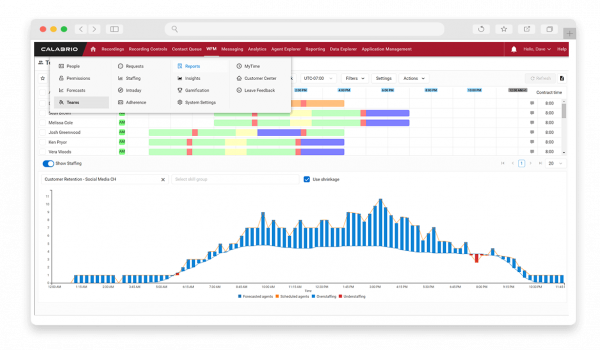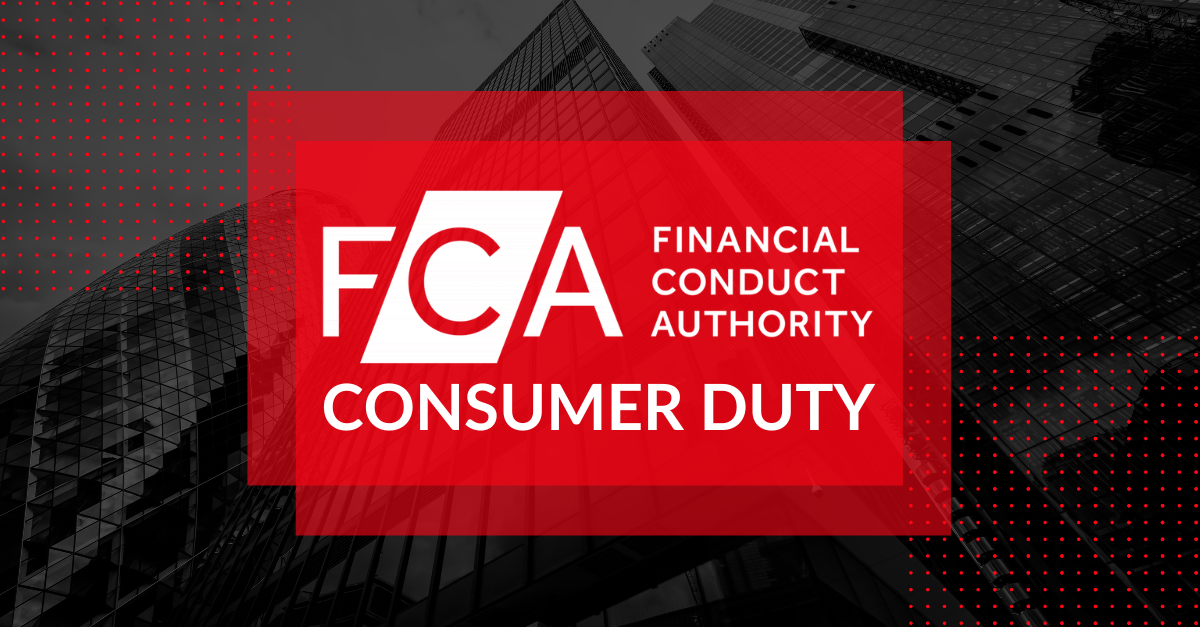The 9 Essentials of Quality Management Systems
The 9 Essentials of Quality Management Systems

A massive survey of 10,000 consumers across Europe that assessed customer expectations before and during the first lockdown of 2020 revealed that almost a third (32%) of consumers will not spend with a brand that provided a poor service during lockdown again. If you extrapolate this against what they would have spent, it means businesses may have lost a total of £2.5bn per year in sales. Quite simply, good customer service and brand loyalty go hand-in-hand, putting the onus on contact centres to raise the bar for interaction quality and successfully implement a quality management system.
Of course, Workforce Management (WFM) solutions can help allocate resources to ensure you’re prepared to meet demand. However, agent scheduling is just a part of the contact centre performance equation. That’s where quality management software comes in: giving you the tools to measure and monitor agent performance, assess the quality and depth of customer interactions and drive continual improvements that positively impact the overall business.
Top Quality Management Challenges
Despite the wide range of quality management systems available on the market, there are other obstacles to overcome. Here are the most common challenges our customers tell us they face:
Challenge #1 – Quality is low on the priority list.
This usually happens if you haven’t done your homework when putting together a quality programme and auditing management systems. Always put customer satisfaction at the heart of the programme, then pull in the right business units and stakeholders.
Challenge #2 – There isn’t enough time to analyse data.
When structural issues or organisational growth result in multiple systems, the amount of data generated can be overwhelming. Aim to eliminate data silos using automated, integrated customer experience and quality management systems so that analysts are not forced to compile information manually.
Challenge #3 – Evaluators lack skill or consistency.
It’s important to have consistency in how you monitor your agents and to remember that quality isn’t a one-off project. It’s a constantly evolving programme that takes into account changes to people, processes, technology and the overall business.
Challenge #4 – Evaluations aren’t conducted frequently enough.
Most companies aren’t assessing enough of their calls for quality. In fact, most contact centres only evaluate 1-2% of the calls they receive, which isn’t enough to give them a clear understanding of the breadth of challenges their frontline employees face.
Challenge #5 – There isn’t enough time to coach and train agents.
Supervisors know that consistent coaching has a direct impact on agent performance. Yet finding the time to proactively coach and train agents – while juggling all their normal day-to-day duties – is a challenge for most contact centres, with or without a quality management system.
Lighten the Load with a Digital Quality Management System
By now, you’d think automation would be ingrained into the psyche of every modern contact centre. The sad truth is that many organisations still rely heavily on manual processes to drive their quality programmes.
According to ContactBabel, the majority of UK contact centres have team leaders and line managers involved in scoring agent calls manually, with 80% of respondents to the survey from large operations having a specific, dedicated quality team involved as well. Meanwhile, 85% of respondents state that ‘not having sufficient time to analyse and use data’ is a problem ‘in some form.’ This suggests that a greater level of automated analysis and insight is required from quality and performance solutions.
9 Essentials of Quality Management Systems
It’s time to embrace the latest automated quality management systems, but beware: not every new tool on the market is worth the investment.
Here are the key technologies your contact centre needs to implement an accurate and comprehensive quality management programme – without getting distracted by unnecessary bells and whistles:
- Call recording – Look for solutions that automatically capture 100% of your interactions, both visually and in audio format. They must securely record and store customer contacts for quality and auditing purposes – with the ability to search and play these recordings as needed. Make sure the technology supports any regulatory requirements you may have, including PCI DSS compliance and GDPR.
- Omnichannel – Tech-savvy consumers expect to contact your company in multiple ways and receive a consistent, seamless experience, regardless of whether they use web, chat, email or a combination of communication channels. To ensure the boosted customer satisfaction, your contact centre needs a robust omnichannel strategy.
- Analytics-enabled – Quality management systems move quality beyond the specific agent and customer transaction towards a comprehensive quality programme that connects with key business issues. Deploy analytics-enabled system for a birds-eye view of interactions so you can evaluate 100% of your contacts, regardless of channel, while streamlining the quality process and making it transparent and fair for everyone.
- Desktop monitoring – As part of a quality management system, desktop monitoring is useful to understand agent effectiveness and drive agent productivity by determining which resources they use and whether their activities are productive. When combined with other metrics that gauge agent effectiveness – such as average quality evaluation score, the number of positive sentiment calls received or agent adherence rates – desktop monitoring adds a powerful new dimension to quality management.
- Live monitoring – Desktop monitoring can include real-time monitoring of both the audio and screen activity of an agent. For example, you might decide to monitor a newer agent while they’re on a call to see if your on-boarding training is effective or follow an agent who is struggling with a difficult customer and step in with real-time support.
- Speech analytics – This function forms a valuable part of quality management software because it unlocks the voice of the customer by turning raw customer interaction data into relevant and readily usable insights. Consider using speech analytics to analyse and identify the most relevant calls for quality assurance purposes quickly and accurately.
- Sentiment analysis – This feature goes one step further, leveraging speech analytics to provide vital intelligence about your customers’ moods. Sentiment analysis automatically determines customer sentiment by utterance and looks at those utterances in the context of the words around them to uncover a deeper understanding of the full customer experience. Customer sentiment can then be fed into your quality management system.
- Metadata integration – Metadata is additional information about an interaction that gets automatically attached to the contact and is available for playback as soon as the recording is complete. You can integrate and attach third-party metadata sources, such as customer data from Salesforce or third-party post-interaction surveys, to store all information in one place along with the full contact recording and transcription.
- Post-call surveys – Surveys can provide valuable information about your customers’ interaction experiences and insight into their general perceptions about your organisation. They can also help you target contacts for evaluation. When combined with agent self-evaluations, post-call survey data provides a 360-degree view of an interaction.

Performance Management and Coaching: The Final Piece of the Quality Management System Jigsaw
Calabrio’s own research reveals that stress levels among agents are rising sharply, with 96% claiming to feel stressed at least once a week while one-third of agents in the UK say they are considering leaving their current job within a year. This is bad news for both agents and contact centre performance. It’s a huge wake-up call for the industry, but there’s still a long way to go.
Today, nearly all (86%) of employers say that mental health, stress and burnout are a top priority; however, half (49%) have not yet formally articulated a wellbeing strategy for their workforce and only a quarter have already articulated and adopted a wellbeing strategy. It’s time to build better teams with smarter coaching and targeted training opportunities.
Self-service automation has undoubtedly played a significant part in alleviating stress and improving work/life balance for agents but the promise of a meaningful career is just as important. Most agents look forward to learning something new and want their training to be more frequent, personalised and flexible.
To achieve this, build automated performance coaching into your quality management system and see how easy it is to monitor real-time performance, assess quality objectives and identify skills gaps, individual challenges, successes and opportunities for personal growth and development.

Transform Your Contact Centre Performance with Quality Management Systems
Positive one-to-one engagement between your agents and customers is the root of brand loyalty, and brand loyalty drives revenue growth. Now it’s your turn to shine.
Learn how you can build a better business by managing contact centre performance effectively and investing in an effective quality management system. Then, sit back and enjoy the benefits of happier agents and greater customer satisfaction, higher revenues and lower recruitment and retention costs.









